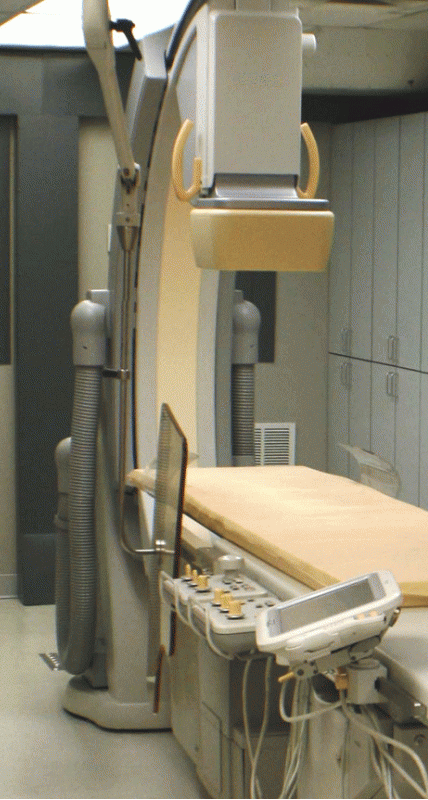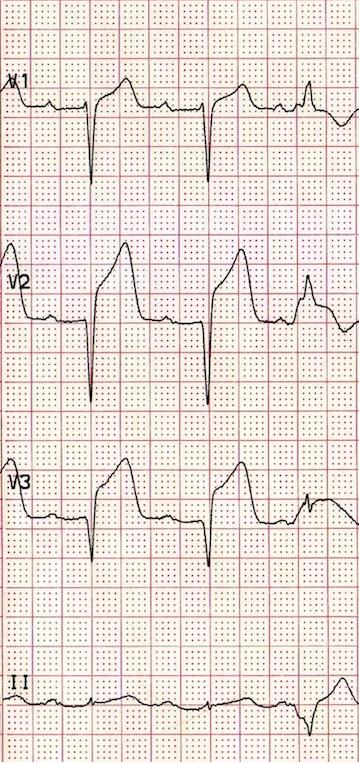Room Preparation
The patient room and table should be cleaned according to hospital policy prior to placing the patient onto the examination table. To assist with patient transferring after the procedure, and to save your back, a patient transfer sheet should be placed on the table underneath a draw sheet.
Gather the necessary supplies for the procedure. This should include an exam pack, sterile gloves, sterile gowns, sheath(s), and catheters...
Position the patient centered onto the examination table. If the patient is able to, have them feel both edges of the table to make sure that they are centered. Once the patient is centered, place the arm boards along the patient sides. Be sure to tuck the armboards inclose enough to the patient to avoid interference with the C-arm as it rotates. Have the patient lay their arms down in the armboards and explain to them to keep their arms to their side throughout the procedure to prevent contamination to the sterile field and to not interfere with the procedure.
Connect the patient to non-invasive monitoring. Be sure to keep non-radiolucent items away from the area to be examined. Non-radiolucent ECG cables should be positioned along the shoulders and then down along the left side. It is good practice to place the non-invasive blood pressure cuff (NIBP) on the opposite side of the IV, unless contraindicated. Keep the cable of the NIBP away from the legs in case a peripheral runoff examination is performed. SPO2 monitoring is essential for conscious sedation.
The scrub technician should then begin to prep the procedure table with the necessary supplies needed for the case. This table can be set-up according to clinician preference, but the picture below demonstrates and general way to organize the items necessary for the procedure. Position your flush bowl so that it is easily accessible. Circulating staff will fill the flush bowl with heparinized saline. Fill you flush syringes with heparinized saline to about 2/3 full - prime the syringes to eliminate any air bubbles. Obtain your catheters from circulating staff by attaching flush syringe to hub of catheter, flushing catheter, and then removing from package. Coil the catheter no more than once to avoid deforming the integrity of the catheter. Assemble the sheath and introducer assembly and flush with saline.
Drape the patient according to sterile technique. If groin access is being peformed, expose the correct bulls-eye of the drape and place over the groin site. Proceed to unfold the drape to completely cover the patient from the shoulders down to the end of the table. Placing a sterile towel below the groin site between the legs is helpful in collecting blood loss during the procedure. Place sterile bags over the Image Intesifier, X-ray shield, and any other equipment that may be attached to the table that may contaminator the clinicians hands and equipment used for the procedure.
Proceed to set up the manifold injector. The manifold injector will be discussed on the Coronary Angio page.

